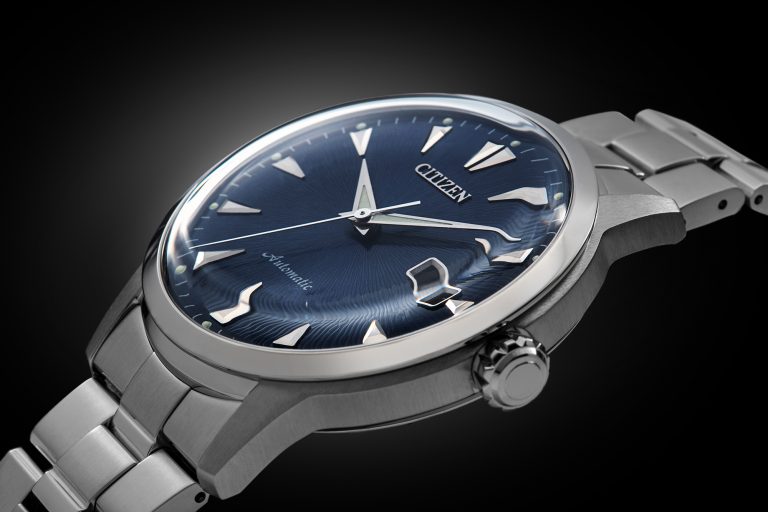A Winning Formula
While Citizen has been a reliable purveyor of affordable and well-made watches, it has only been in the past two years since the launch of the Fugu that the brand has really turned its attention to the enthusiast market.

Not only was the Fugu a well made and affordable mechanical watch, it also had a ton of character, stemming from the story of how it was used by Italian Navy divers in the 1990’s and how fans of the original watch had given it the nickname “Fugu” meaning “puffer fish” in Japanese, on account of the shape of the bezel.
These were watches that were easy to buy, mostly because of its affordable price point but also because it possessed the bulletproof quality and reliability that we’ve come to expect from Citizen, and a set of useful specifications along with a compelling story.
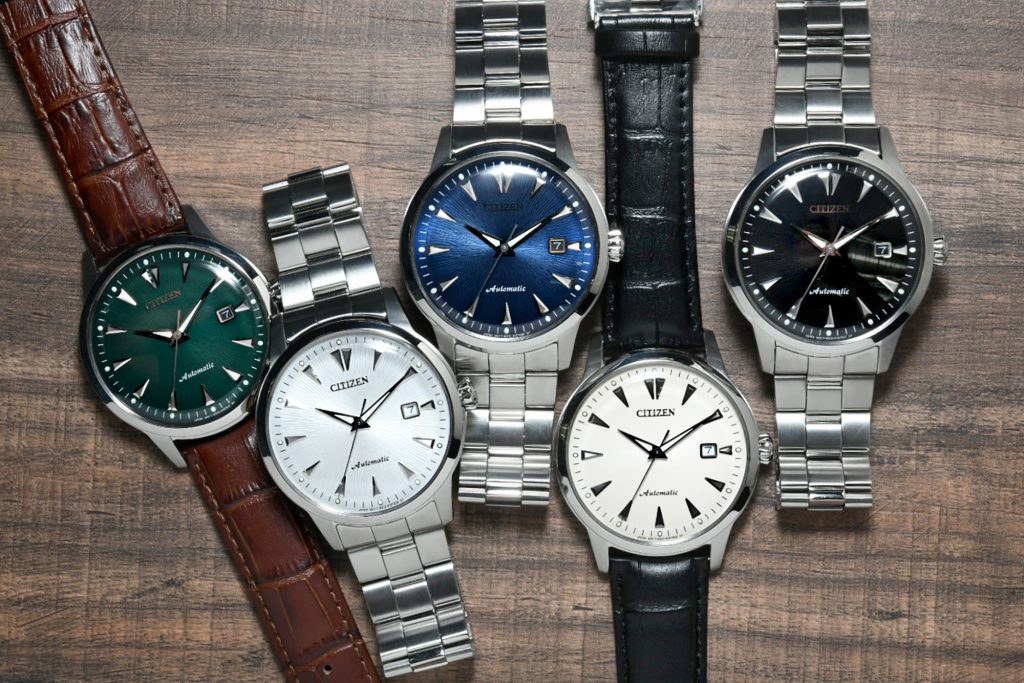
Which is just as well that we now have the new Kuroshio 64 collection, a watch that follows the same template as the Fugu, this time taking inspiration from one of the iconic models in Citizen’s history – the Parawater of 1959 – the first Japanese made water resistant watch.
Instead of a tough and masculine diver, the Kuroshio 64, despite its origins as a watch designed for extreme use (in an era where many watches were not made for use underwater) comes across as more dressy and vintage inspired, which is a nice contrasting option.
Iconic Parawater
1959 was the year when the Parawater was introduced to the world, and it had come about as a result of intense research into making a watch that could be used in a place where watches had previously been uncommon – underwater. Certainly while the Swiss already had the water resistant Rolex Oyster which had already been invented in the 1920s, the Japanese did not have anything that could compete.
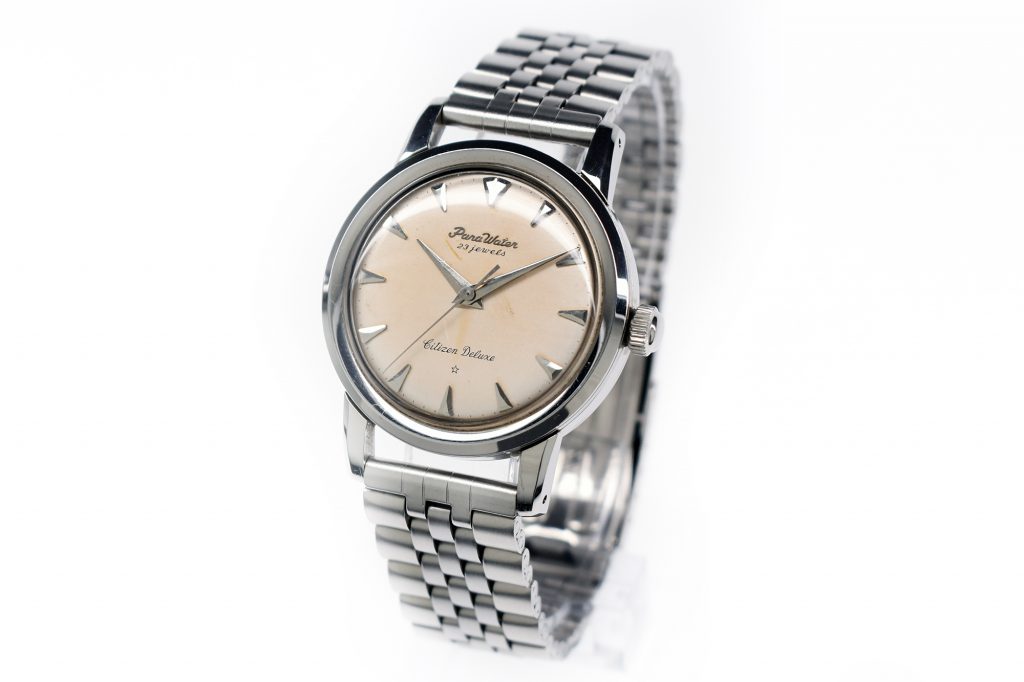
Realising the importance of creating a tough water resistant watch that owners would not need to take off, essentially for any reason, a number of Japanese watch companies had already embarked on developing one. It was Citizen however, that came to market first, having begun their research much earlier than anyone else.
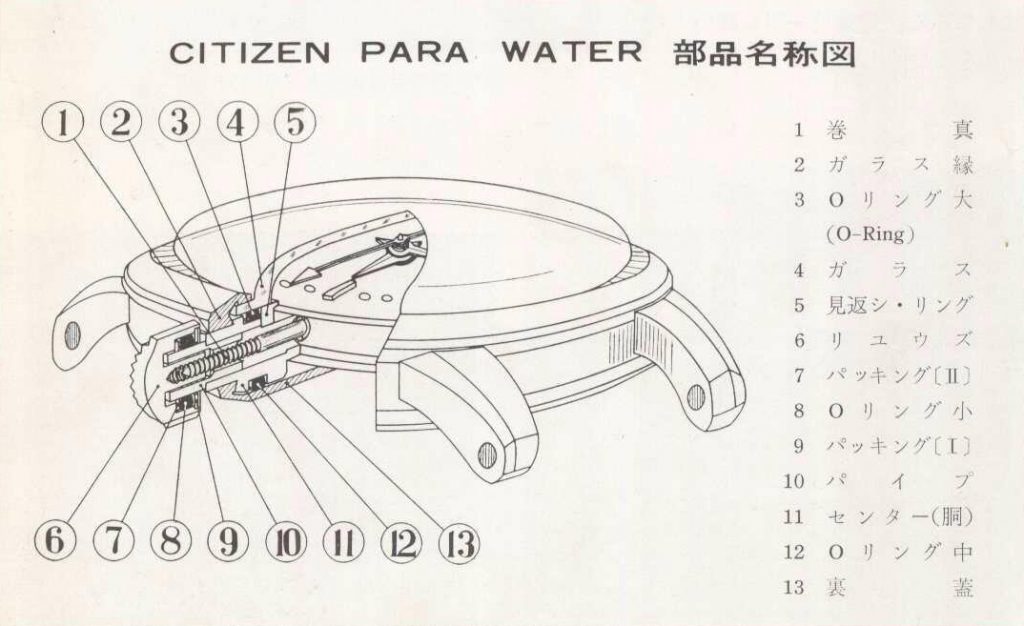
Their solution was simple – to have the vulnerable portions of the watch case be protected by O-rings. A system of O-rings was designed therefore to protect the case-back, the crown and the crown tube, and with that the Parawater was born.
The name of the new watch was derived from the Latin verb “parare,” meaning “to prepare” or to “guard against” or “protect” and “water”, and thus the watch was “protected against water.” This is very much the same way that another Citizen innovation, their proprietary anti-shock system for mechanical watches, “Parashock”, was named.
The Parawater was a revelation when it was introduced as owners could now wear it to the beach or even perform everyday tasks such as washing hands without having to take off one’s watch.
Being that water resistance was an innovation that was hitherto unheard of in a mass market domestic watch, it became imperative for Citizen to communicate the benefits to customers, as well as to prove the claims that the watch was indeed water resistant. Those familiar with watch history will know that this was exactly what Rolex did when they first released their “Oyster” cased watches, and their marketing efforts were similarly provocative. The first thing they did was putting a watch on the wrist of long distance swimmer Mercedes Gleitze in her attempt to cross the English Channel, the second was to have the new watches submerged in tanks with live fish in them, displayed in jeweller’s shop windows.
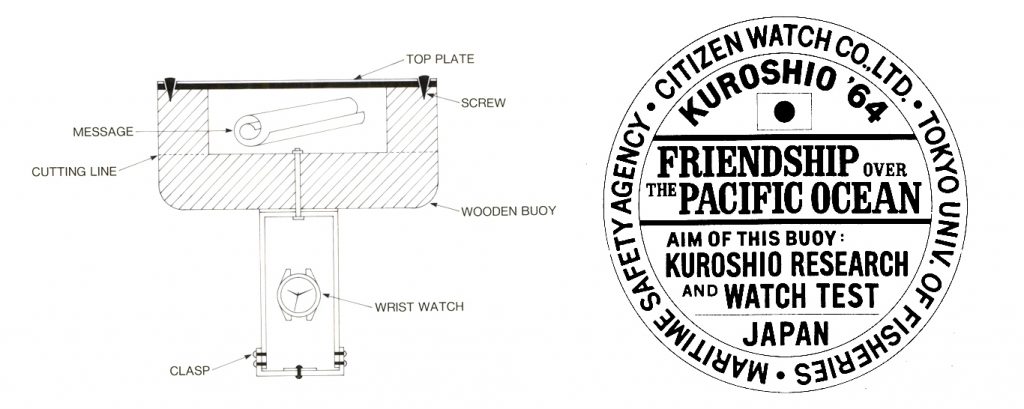
Citizen took a different approach with the Parawater, and embarked on a series of unorthodox tests that would combine scientific research, a product test and the chance of a free watch for those who came across the bright yellow buoys that were set out to sea.
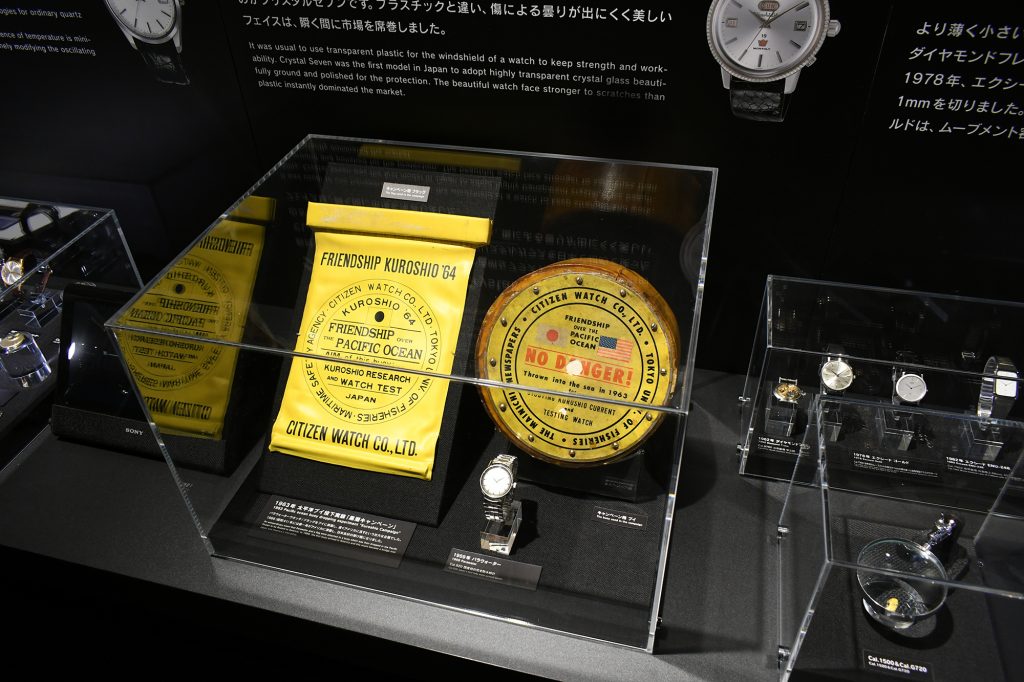
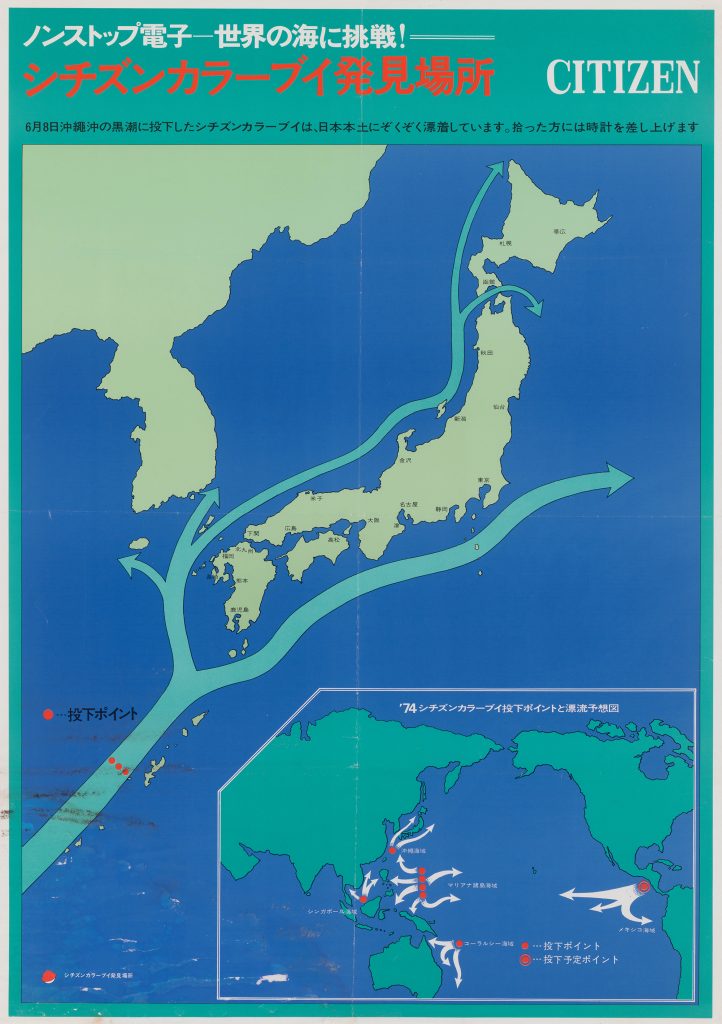
In conjunction with the Japan Maritime Self-Defense Force and the Tokyo University of Marine Science and Technology, scores of watches were suspended below the water line, in these specially designed buoys and let out to sea at predetermined points, with the ocean current taking them away. Because these buoys were coloured bright yellow so that people who came across them could see them, and when they picked them up, the text written on it would assure them that the buoy was safe. When opened, they would find the watch inside, and instructions on how to report the location where it was found as well as a message telling them that they could keep the watch.In fact the most famous campaign was named “Kuroshio 64”, with “Kuroshio” being Japanese for “Black or Japan Current” – which was the subject under study and research with the buoys, and 64 standing in for the year that the test was conducted – 1964.
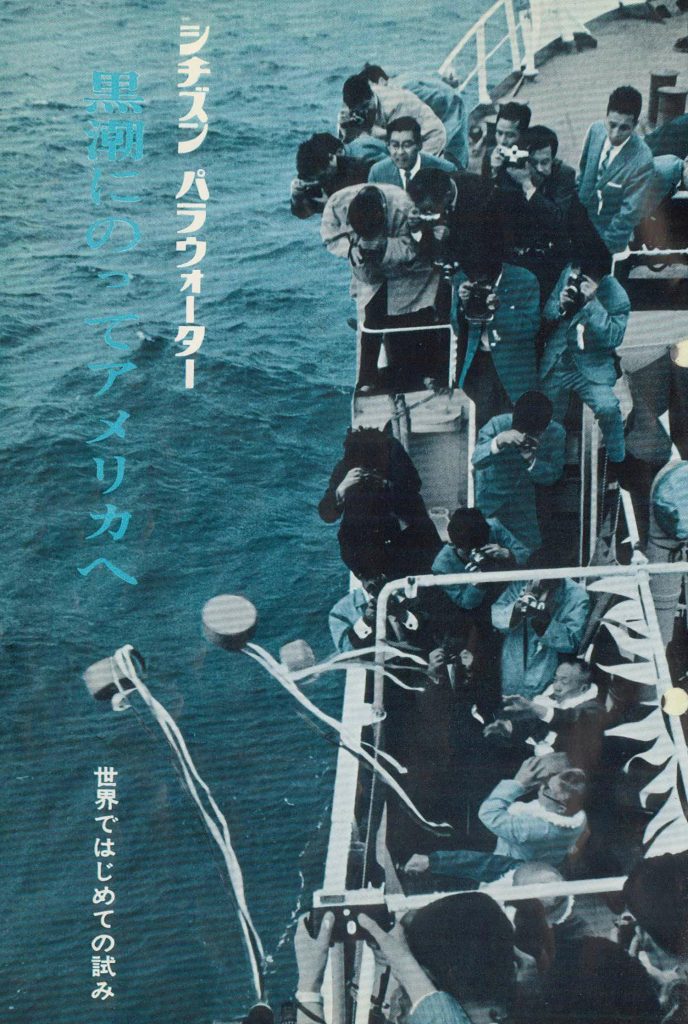
With these campaigns heavily promoted and advertised in magazines, the fame of the Parawater watch was made, and at this point, expectations of consumers were raised enough to want what it introduced – water resistance – to become a standard feature.
The Collection
The Kuroshio 64 collection that comes to us this year, takes its look from the original Parawater of 1959. If you compare the pictures of old versus new, you’ll realize that most of the look is in tact, including the shape of the case and lugs, arrowhead markers, dauphine hands and domed crystal.

The differences are the modern case size of 40.4mm, as well as lumed hands, and an improved water resistance of 100 metres. Interestingly, the original Parawater did not have a specified depth rating on it, nor did it use the words waterproof or water resistant. Instead the name of the watch “Parawater” was enough to denote that it was sealed against water. Citizen had tested it at the time, and the true rating was about 40 metres.
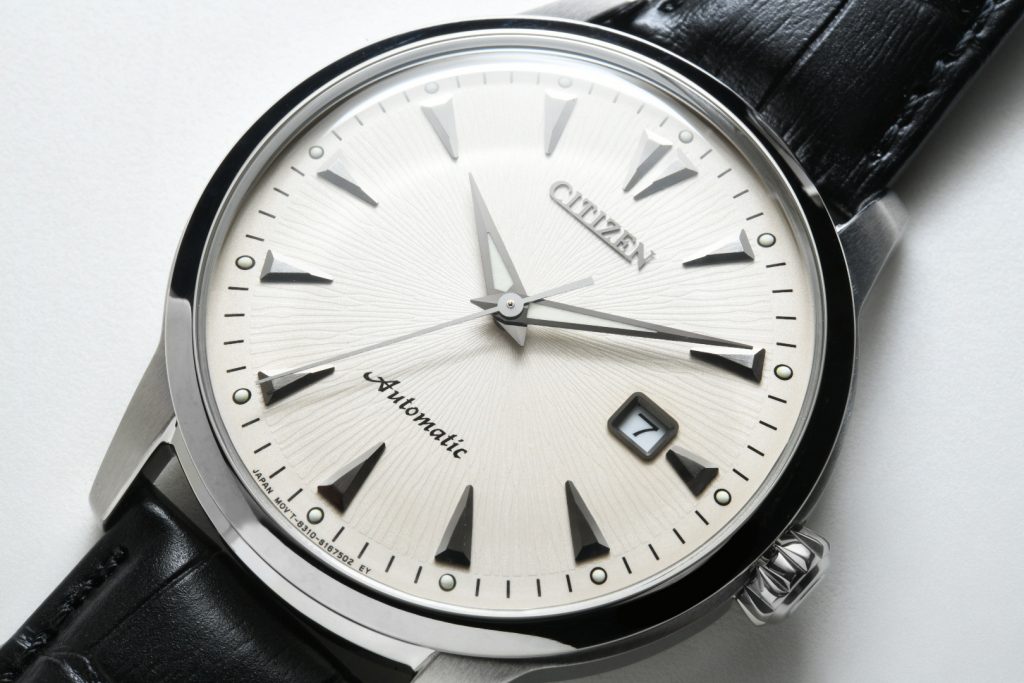 Another key difference is the dial design, embossed with a pattern that is inspired by ocean waves. A point that was made by Citizen, that the colours for the initial launch collection – dark blue, black, dark green, beige and silver white – were chosen due to the fact that ocean, in its varying states, can take in these various shades. That is certainly an interesting detail, and adds a nice bit of visual storytelling into the watches.
Another key difference is the dial design, embossed with a pattern that is inspired by ocean waves. A point that was made by Citizen, that the colours for the initial launch collection – dark blue, black, dark green, beige and silver white – were chosen due to the fact that ocean, in its varying states, can take in these various shades. That is certainly an interesting detail, and adds a nice bit of visual storytelling into the watches.

The new Kuroshio 64 watches also comes with Citizen’s own Calibre 8310, which is a nice movement with good features, that make it competitive with many other more expensive watches out there. The key features include a power reserve of 60 hours and hacking seconds functionality, which are things that we generally don’t expect in watches of this price point.
Design wish, the watches themselves are elegantly appointed and are the kind of watches that you would buy and wear for work, play or for essentially anything. The 40mm size ensures that such versatility as it is the sweet spot for an ideal everyday watch.

Initial variations that are available include a dark blue, black and silver white dial on stainless steel bracelet, as well as a silver white dial model on black leather strap and a dark green dial model on brown leather strap.
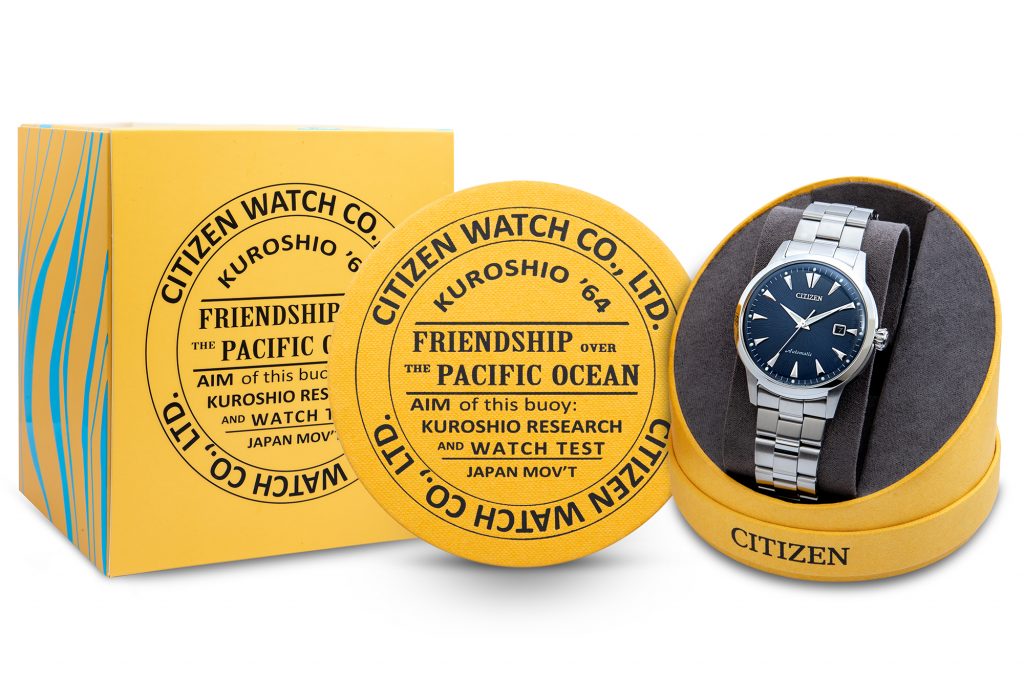
These watches will be available in various Asian markets from April 2020 onwards, with no limitation on all of them save the the blue dial on bracelet variant, which is limited to 1959 pieces – which is obviously a call out to the year that the Parawater was introduced.
Find out more at http://citizenasialimited.com


